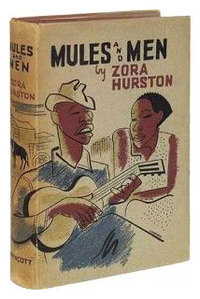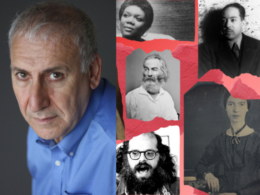Harlem World recently posted a video containing footage recorded by Zora Neale Hurston during one of her research trips to Florida in 1928. (Update: Some of the footage can now be viewed on YouTube.) Before—and even after—she became known as a novelist and story writer, Hurston actively pursued many ethnographic research programs. She graduated from Barnard College with a B.A. in anthropology in 1927 and spent several years in the late 1930s and early 1940s collecting and performing folksongs reflecting black culture in her native Florida for the Federal Writers Project (WPA). About these early films, Harlem World notes:
[Hurston] used the loan of a camera to photograph fifteen reels of film preserving the heritage of southern African-American culture. Of these reels, only nine are known to have survived and contain black & white, occasionally grainy footage capturing children at play, a baptism in a river, a logging camp, and footage of octogenarian Cudjo Lewis, the final survivor from The Clotilde, the last arriving slave ship to America (in 1859). No intertitles are presented with these clips, although the musical accompaniment is comprised of spirituals and bluegrass music.
Travel expenses and the cost of the camera were provided by Charlotte Osgood Mason, a wealthy and controversial patron of Hurston, Langston Hughes, and the Mexican artist Miguel Covarrubias. Mason also funded the research behind Hurston’s first work of nonfiction, Mules and Men (1935). The University of Virginia Crossroads website offers additional insights into this troublesome patron–artist relationship as well as additional material about the creation of Mules and Men.

The Library of America volume Zora Neale Hurston: Folklore, Memoirs, and Other Writings includes the complete text of Mules and Men and features the original illustrations by Miguel Covarrubias.



